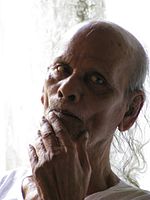This article needs additional citations for verification .(March 2020) |
This is a list of notable residents and people who have origins in the Sylhet Division of Bangladesh and the Barak Valley of the Indian state of Assam. This list also includes British Bangladeshis, Bangladeshi Americans, Bangladeshi Canadians, Bangladeshi Europeans and other non-resident Bengalis who have origins in Greater Sylhet. The people may also be known as Sylheti .
Contents
- Activism and cause célèbres
- Art and design
- Business and industry
- Education and sciences
- National Professors of Bangladesh
- Economists
- Entertainment
- Families
- Journalism
- Legal
- Literature
- Military
- Monarchs and rulers
- Music and dance
- Politics and government
- Bangladesh
- British India
- Pakistan
- India
- West
- Religion and spirituality
- Islam
- Other
- Sports
- Bangladesh 2
- India 2
- Fictional characters
- References
















